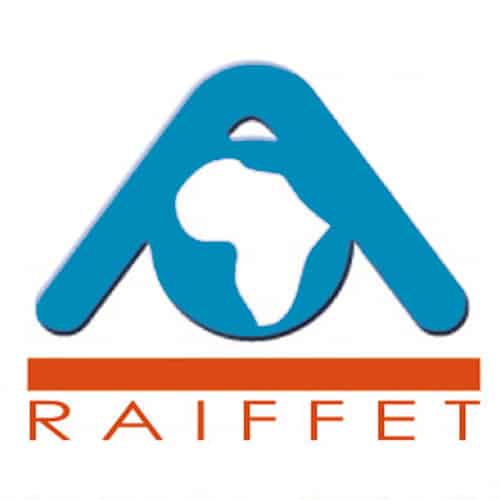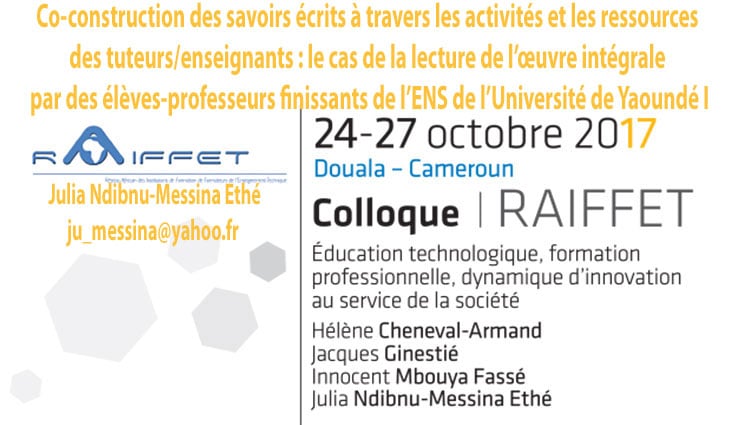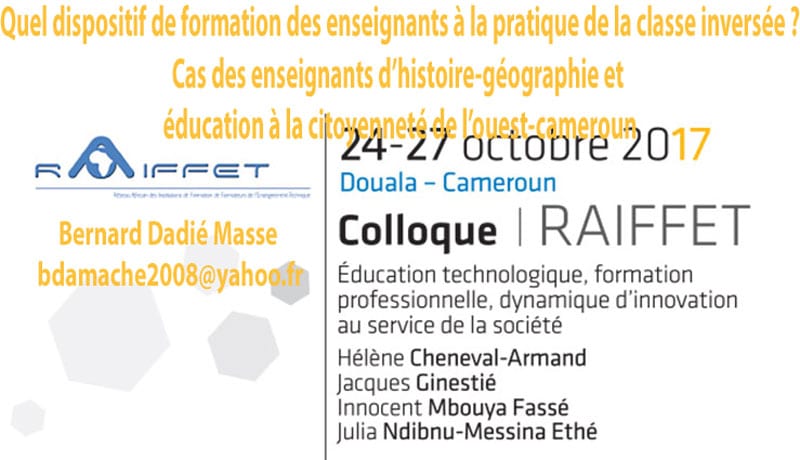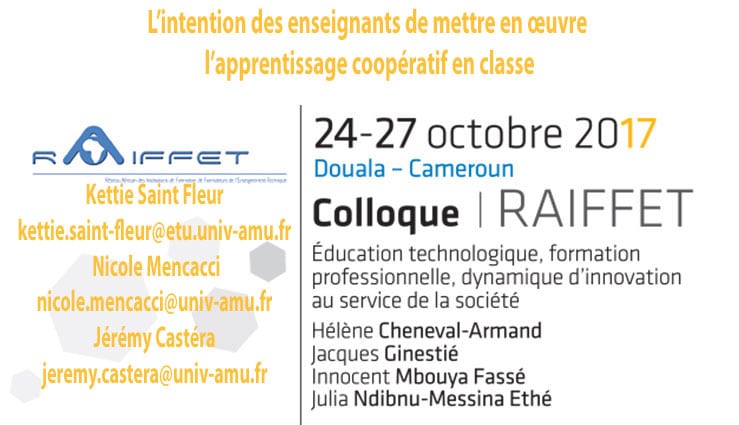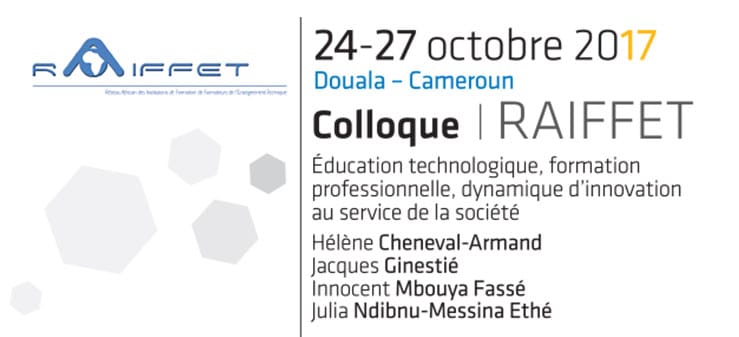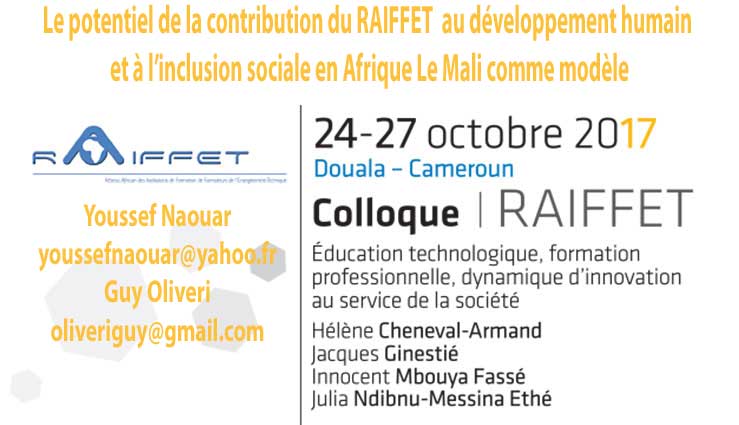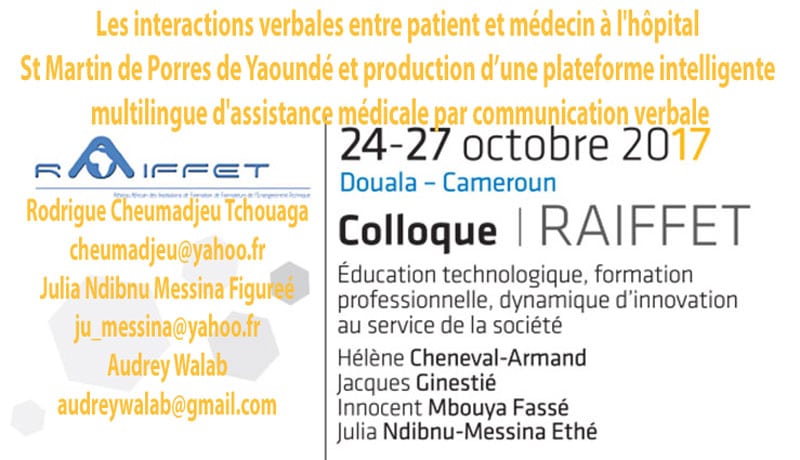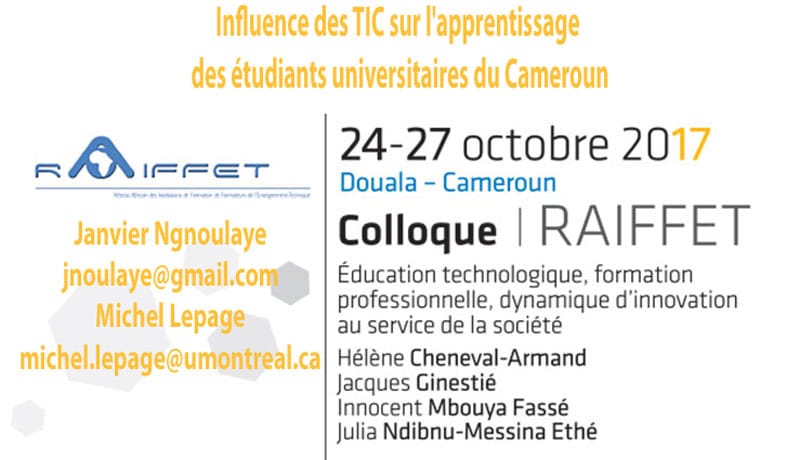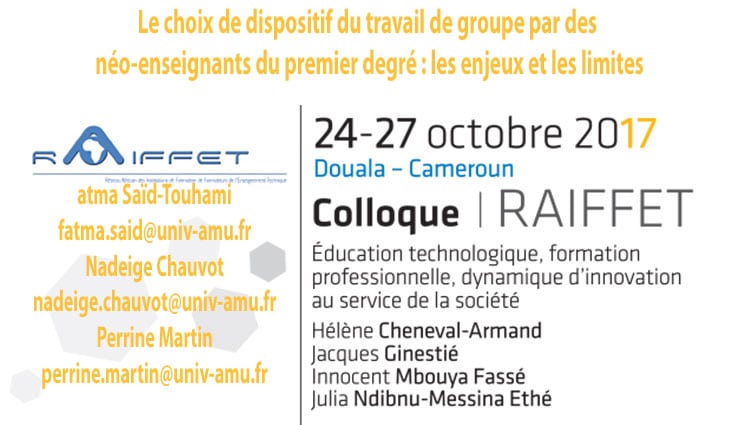
Designing blended learning : collaboration for teacher-educators training
Maria Antonietta Impedovo maria-antonietta.IMPEDOVO@univ-amu.fr
Abstract
The purpose of this paper is to present some theoretical principles and an operational design of blended learning. In particular, we will focus on the role of collaborative learning and object-oriented activity in the learning process. Then, we present a ongoing project about blended learning for teacher-educators between Europe and Asian universities.
Key words
Blended learning, collaborative learning, lLearning, artefact, object-oriented activity
Introduction
Today, training is increasingly dematerialised in online courses that are recognised as constituting a viable alternate instructional delivery method in higher education. The introduction of technology has made possible the reinforcement of the abandonment of traditional forms of teaching, the promotion of more active forms of participation (Bereiter, 2002 ; De Kock, Sleegers, & Voeten, 2004 ; Impedovo, Andreucci, 2016). Hence, one task of educational systems is to effectively design online training and to rethink optimal training programmes and curricula to improve education (Lakkala, Toom, Ilomäki, & Muukkkonen, 2015). Teacher-educators play an important role in the introduction of innovative practice in teacher training (Impedovo, Said, Brandt-Pomares, 2016). The purpose of this paper is to present some theoretical approaches to and strategies for designing and implementing blended learning courses.
Blended learning
The term Blended Learning encompasses different educational experiences, modes of communication, technologies, methods of learning, forms of time management, and skills (Driscoll, 2002 ; Garrison & Kanuka, 2004). It proposes an appropriate mix of tools, methods, and pedagogical models. In fact, BL is understood as the optimal combination of learning and online presence, enhancing the potential benefits of both approaches for students and for teachers (Graham, Allen, & Ure, 2003). Bonk and Graham (2006) propose four dimensions as being able to synthesise and represent the possible structure of BL : space, time, the characteristics of the media, and human characteristics. So the strength of BL lies in the rethinking of the teaching model to adapt them to the specific context of use (Garrison & Kanuka, 2004). Scholars argue that BL is particularly effective at encouraging the development of critical thinking, relying on the ability of the participants to engage in self-regulated learning (Garrison & Kanuka, 2004).
BL does not necessarily imply adopting complex and advanced technologies. What really matters are the possession of a vision of educational technologies, which should be fully integrated into psycho-pedagogical models. Considering this, the adoption of BL is certainly not easy to implement and does not always guarantee satisfactory results, considering the lack of shared knowledge of the procedures and proper information for implementing it (Thorne, 2003). Consequently, it is important to train tutors and teachers properly, especially regarding the integration of technology in the pedagogy.
Collaboration and common design of artefacts
Artefacts are elements of mediation between individuals and the world, giving new meaning to experiences (Cole, 1996). Indeed, they are considered the results of a process of communication between the subject and the others around an activity, externalising knowledge (Bruner, 1990). The invention of a new artefact is, therefore, a form of the objectification of a new process, which is then shared and socialised in a new community, making possible a creative renewal of knowledge and the artefact (Bonnardel, 2009). Recent attention in the conception of online course has focused on creating concrete, collaborative knowledge objects (e.g., reports, models, schemes, maps, figures, or videos). They are derived from the collective participation of all members in a community, contributing common efforts and resources (Bereiter, 2002 ; Knorr Cetina, 2001). Shared objects can be modified iteratively or revisited by peers or more expert partners in open and continuous discussions. In this way, the so-called collaborative knowledge creation practices that Lakkala, Toom, Ilomäki, and Muukkkonen (2015) describe “as practices where people work intentionally and effectively both individually and together in solving ill-defined problems, co-regulating their work and creating novel solutions and new knowledge” are possible (p. 521). In summary, considering the elements described above, a BL pedagogical scenario (i.e., a description of instructional and learning activities to implement in a specific setting) should include the following: collaborative projects involving social interaction; open-ended and complex problems requiring inquiry and active engagement; shared knowledge objects; epistemic agency – expressed when the subjects are personally responsible for what they believe, supporting such collective efforts of knowledge advancement (Damsa et al., 2010).
Example of blended learning design
In this section we present the project “Blended Learning Courses for teacher educators between Asia and Europe” leaded by Aix-Marseille University and founded by European Union for three years (2016-2019).
Aim of the project
The project intends to support teacher educators’ professional and learning development through a blended learning based on innovative constructivist theories. This Blended Learning (BL) course aims to build an European and Asian countries collaborative community capable to reflect on teaching trainers practices with the support of ePortfolio and Video as reflective tools. The direct aim is to improve teacher educators’ skills, with direct and indirect implication on quality of teacher educators’ skills. In this way teacher educators will be able to prepare future teachers on the assumption of multiple and changing roles in their belonging community. Through the BL course, teacher educators involved in the project will be support to think about what they have learned, and re-evaluate these experiences to see them in new ways that might suggest new practices, producing an impact on their teaching class.
Teacher educators in international context
The project answers to a common European and Asiatic issue to promote the professionalisation of teaching educators and revising teacher training programmes. Indeed, direct target groups are teacher educators from Higher education institutions involved in the project. Indirect target group are teacher-students, pre-service students, in-service teachers in training from Higher education institutions involved in the project ; teacher educators from others Higher education institutions ; teachers’ students, pre-service students, in-service teachers in training from others Higher education institutions. The need to improve teaching practices is a common element in all selected partners. For this purpose, we consider valuable to provide and to equip teacher educators with innovative teaching practices. This need is particularly evident in the Asiatic countries selected. Despite the different situations in the different Asian partners involved in the project, the quality of the teacher education needs improvement, in particular with the introduction of innovative strategies and practices. Despite the different technological situations, the basic infrastructure to impart teacher educators training already exists throughout the countries. All the government policies of the Asiatic countries involved are aware about importance of effective teacher training as a vital part of lifting the education standard of the respective countries. So work on teacher educator’s skill can be a useful opportunity to starting this innovation process.
How will be organized the project
The project will be realized in close cooperation with partners from four European Progam Countries – France, Belgium, Denmark, Estonia and four Asiatic countries – Malaysia, Bangladesh, Bhutan, and Pakistan. The consortium consists of equilibrium between European and Asian countries. All has been considered in terms of complementarities of operational expertise. The international cooperation between the partners make possible the sharing and critically discussion about teacher trainers’ practices, supporting the innovation in pedagogical practices through the use of technologies. All partners in the consortium will play an important role in the realization of the project. An international cooperation enriches this complex role with innovative strategies of teaching practices, making possible a critical comparison, the sharing and reflection, supporting the implementation of innovative practices. Also, the international collaboration is important to support the introduction, integration and appropriation of a real innovation in teaching practices.
Innovative character
The development of reflective thinking is increasingly a focus of debate regarding teacher educators training (Impedovo & Khatoon, 2016). The process of self-reflection is very useful in increasing skills, promoting professional development, facing changing professional contexts, and facilitating the creation of alternative scenarios (Korthagen & Vasalos, 2005). Indeed, the teacher-educators’ professional development is a process which is always in progress, helpful in identifying the strengths and weaknesses of teaching practice and improving upon it (Ahmed & Al-Khalili, 2013).
The use of ePortfolio and the video tools, as sharing tools that can potentially support reflection, is an essential component in teachers’ professional development (Impedovo & Cheneval-Armand, 2016).
The use of digital video in spread in education and, in particular, in training teachers (Brophy, 2004 ; Cannings, Talley, Redmond, & Georgi 2002). The video is the stimulus for the activation of knowledge of teaching and provides indirect teaching experience (Miller & Zhou, 2007). The opportunity to review teaching methods with the support of tutors or experts is an essential condition for the development of teaching expertise. Video is not effective in itself (van Es, 2009) and it must be embedded in appropriate instructional contexts and with adequate scaffolding.
Activity and objectives
The blended course developed in this project will include :
- Collaborative learning and construction of knowledge (Scardamalia & Bereiter, 2003): in this way, the teacher educators will be leard innovative teaching practices and able to implement these practices to improve teaching training.
- Artefact and object-oriented activity to improve teaching training curriculum: for this, there is a concrete and jointly collaborative activity oriented to develop a common draft of teacher training curriculum.
- Whit this design, it will possible to include a combination of different methods of instruction or methods of teaching/learning in science and technology with training content and sharing of teaching best practices from each partner ; and a combination of online training opportunities and continue support to the implementation of it.
Conclusion
If well designed, blended learning course could be a space within which to improve professional competence and transversal skills, considering that students have to deal with complex working contexts. However, it leads to an effective learning if supported by a central and active role of the teacher and well structuring task.
Funding
The project “Blended Learning Courses for teacher educators between Asia and Europe” (n° : 574130-EPP-1-2016-1-FR-EPPKA2-CBHE-JP) is supported by European Commission Education, Audiovisual and Culture Executive Agency (EACEA) – Erasmus+ Higher Education – International Capacity Building program.
Bibliography
Ahmed, E. W., Al-Khalili, K. Y. (2013). The Impact of Using Reflective Teaching Approach on Developing Teaching Skills of Primary Science Student Teachers. The Online Journal of New Horizons in Education, 3(2), 58-64.
Bereiter, C. (2002). Education and mind in the knowledge age. Mahwah, N.J., Lawrence Erlbaum Associates.
Bonk, C. J. & Graham, C. R. (Eds.). (2006). Handbook of blended learning : Global Perspectives, local designs. San Francisco, CA : Pfeiffer Publishing.
Bonnardel, N. (2009). Activités de conception et créativité : de l’analyse des facteurs cognitifs à l’assistance aux activités de conception créatives. Le travail humain, 1(72), 5-22.
Brophy, J. (Ed.). (2004). Using video in teacher education. Amsterdam, NL : Elsevier.
Bruner, J. (1996). The culture of education.Cambridge.MA : Harvard University Press.
Cannings, T., Talley, S., Redmond, P., & Georgi, D. (2002). Online video case studies : What have we learned about their value in preservice education ? Society for Information Technology & Teacher Education International Conference 1, 2537–2538.
Cole, M. (1996). Cultural Psychology. Cambridge : Harvard University Press. Trad. it. a cura di M.B. Ligorio. (2004). Psicologia culturale. La disciplina del passato e del futuro. Roma : Edizioni Carlo Amore.
Damşa, C., Kirschner, I., Andriessen, P. Jerry E. B. , Erkens, Gijsbert, & Sins, Patrick H. M.(2010). Shared Epistemic Agency : An Empirical Study of an Emergent Construct’, Journal of the Learning Sciences, 19(2), 143- 186
De Kock, A., Sleegers, P., & Voeten, M.J.M. (2004). New learning and the classification of learning environments in secondary education. Review of Educational Research, 74(2), 141-170.
Driscoll, M. (2002). Blended learning : Let’s get beyond the hype. E-Learning, 3(3), 54.
Garrison, R. & Kanuka, H. (2004). Blended learning : Uncovering it transformative potential in higher education. The Internet and Higher Education, 7(2), 95-105.
Graham, C. R., Allen, S., and Ure, D. (2003). Blended Learning Environments : A Review of the Research Literature, http://msed.byu.edu/ipt/graham/vita/ble_litrev.pdf.
Impedovo, M. A., Andreucci, C. (2016). Co-élaboration de connaissances nouvelles : du modèle théorique à ses outils technologiques. STICEF – Sciences et Technologies de l’Information et de la Communication pour l’Éducation et la Formation, 23, 1-18. ISSN : 1764-7223.
Impedovo, M. A., Cheneval-Armand, H., (2016). Professional Learning Through Video : Reflection of a Pre-service Teacher one year on. Alberta Journal of Educational Research, 62(4).
Impedovo, M. A., Khatoon Malik, S. (2016). Becoming a reflective in-service teacher : Role of research attitude. Australian Journal of Teacher Education, 41(1), 100-112.
Impedovo, M. A., Said, F., P. Brandt-Pomares (2016). Educational technology in a French Teacher Training University : teacher educators ‘voice. IJEDE (International Journal of E-Learning & Distance Education), 32,1, 1-14. ISSN : 2292-8588.
Korthagen, F., & Vasalos, A. (2005). Levels in reflection : core reflection as a means to enhance professional development. Teachers and Teaching : Theory and Practice 11(1), 47-71.
Lakkala, M., Toom, A., Ilomäki, L., Muukkkonen, H. (2015). Re-designing university courses to support collaborative knowledge creation practices. Australasian Journal of Educational Technology, 31(5). organ, K. R. (2002). Blended Learning : A Strategic Action Plan for a New Campus. Seminole, FL: University of Central Florida.
Miller, K., & Zhou, X. (2007). Learning from classroom video : what makes it compelling and what makes it hard. In R. Goldmann, R. Pea, B. Barron, & S. J. Derry (Eds.), Video research in the learning sciences (pp. 321–334). Mahwah, NJ : Lawrence Erlbaum.
Scardamalia, M., Bereiter, C. (2003). Knowledge Building. In J.W. Guthrie (Ed.), Encyclopedia of education, Second Edition (p. 1370-1373). New York : Macmillan Reference.
Thorne, K. (2003). Blended learning : How to integrate online and traditional learning. London : Kogan Page.
Van Es, E. A. (2009). Participants’ roles in the context of a video club. Journal of the Learning Sciences, 18(1), 100–137.
